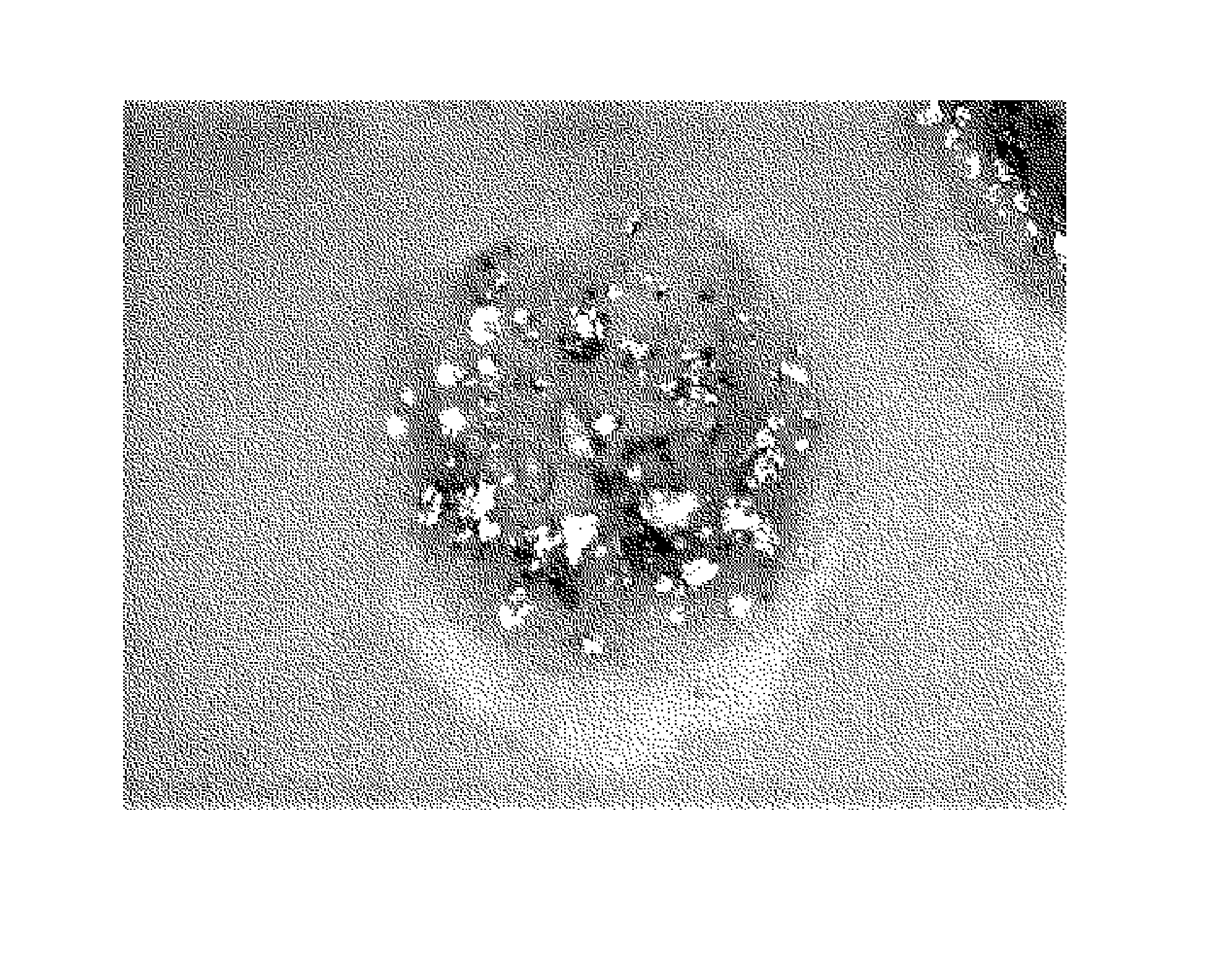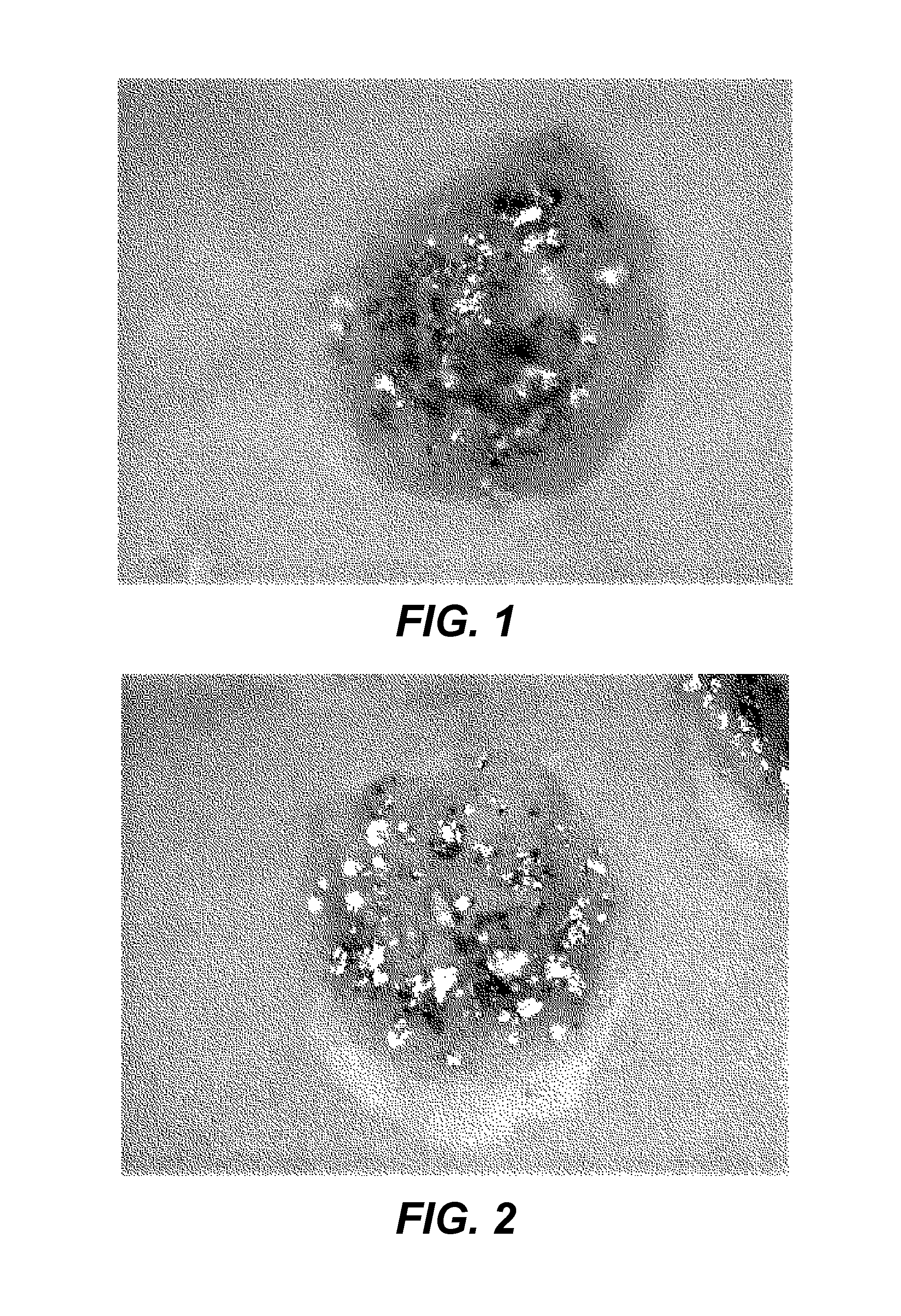Toner containing metallic flakes and method of forming metallic image
a technology of toner and metallic flakes, applied in the field of electrostatic toners, can solve the problems of incorrect amount of marking particles being deposited, uneven transfer and development, or both, and achieve the effects of enhancing the alignment of metallic flakes, reducing the amount of binder, and reducing the amount of toner
- Summary
- Abstract
- Description
- Claims
- Application Information
AI Technical Summary
Benefits of technology
Problems solved by technology
Method used
Image
Examples
example 1
(Invention) Porous Toner Containing Aluminum Flakes
[0060]A multiple emulsion process in conjunction with an evaporative limited coalescence (ELC) process as described above was used to prepare the porous toner of this example. A first water phase (W1) was prepared using 37.5 g of a 4 wt % carboxymethyl cellulose solution in water along with 34.6 grams of water, and a premixed paste of 2.5 grams OBRON SF 121 Aluminum flakes and 5 grams SYNFAC 8337. The oil phase was made up using 141.7 g of 29.6% solution of Kao N resin in ethyl acetate, 16.4 grams of a dispersion of 24.4% WE-3 wax in ethyl acetate containing 20 wt % P2000 dispersant based on wax, 0.75 grams of a charge control agent FCA 2508N and 88.5 g ethyl acetate. To this oil phase was added the W1 phase followed by mixing with a Silverson L4R Mixer fitted with a large holed disintegrating head. A part (326 g) of the resulting water-in-oil (W1 / O) emulsion was gently stirred into 544 grams of a water phase (W2) comprising 10.4 gr...
example 2
(Comparative) Solid Toner Containing Aluminum Flakes
[0061]Kao N resin was dissolved in ethyl acetate and was added as a 29.6% solution to a premixed paste of 2.5 grams OBRON SF 121 Aluminum flakes and 5 grams SYNFAC 8337. To this was added and mixed in 16.4 grams of a dispersion of 24.4% WE-3 wax in ethyl acetate containing 20 wt % P2000 dispersant based on wax followed by 0.75 grams of a charge control agent FCA 2508N. This resulting oil phase was dispersed in 534 grams of a pH 4 citrate / phosphate buffer comprising 10.5 grams of NALCO 1060 followed by magnetic stirring. The ethyl acetate was evaporated using a Buchi ROTA VAPOR RE120 at 30° C. under reduced pressure to yield solid particles of Kao N containing metal flakes. The silica on the surface of the toner was removed by stirring for 15 min at pH12.5 using potassium hydroxide. The particles were then washed and dried. The median particle size measured using the Horiba LA-920 was 67 micrometers.
Fusing: Solid vs. Porous Toners C...
PUM
| Property | Measurement | Unit |
|---|---|---|
| diameter | aaaaa | aaaaa |
| aspect ratio | aaaaa | aaaaa |
| aspect ratio | aaaaa | aaaaa |
Abstract
Description
Claims
Application Information
 Login to View More
Login to View More - R&D
- Intellectual Property
- Life Sciences
- Materials
- Tech Scout
- Unparalleled Data Quality
- Higher Quality Content
- 60% Fewer Hallucinations
Browse by: Latest US Patents, China's latest patents, Technical Efficacy Thesaurus, Application Domain, Technology Topic, Popular Technical Reports.
© 2025 PatSnap. All rights reserved.Legal|Privacy policy|Modern Slavery Act Transparency Statement|Sitemap|About US| Contact US: help@patsnap.com


